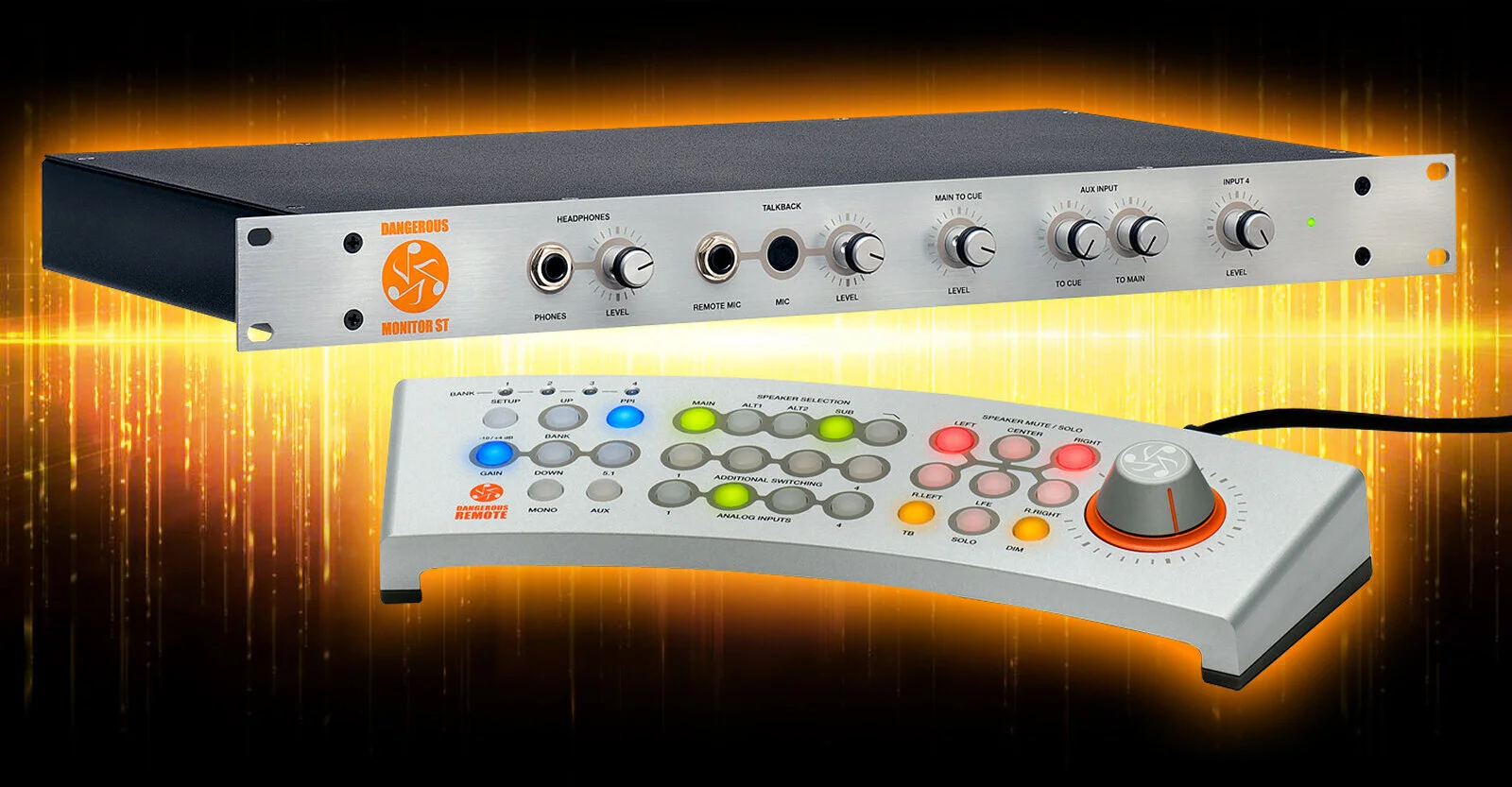SOUND ON SOUND REVIEW: DANGEROUS MUSIC MONITOR ST/SR
This modular monitor controller system offers an easy upgrade path from stereo to surround capability, and transparent audio quality to boot.
Dangerous Music are an American company producing high-quality analogue equipment to help enhance the facilities and interfacing of computer DAW systems. Among the company’s impressive product portfolio are the well regarded ‘2-Bus’ analogue summing box, ‘Monitor’ monitor controller, ‘Master’ output section, ‘S&M’ sum and difference interface, and ‘MQ’ metering and headphone monitoring box. However, the subject of this review is the latest addition to the collection, the Dangerous Monitor system, comprising the ST and SR units, launched at the start of the year.
The ST unit is the core of the system and is a well-equipped stereo monitor controller, complete with talkback and headphone cue facilities. The optional SR unit expands the system’s routing capabilities for full 5.1 surround monitoring duties. An elegant desktop wired remote control ships with the ST unit but is fully featured for 5.1 control from the outset, so there is no obsolescence or redundancy involved in upgrading, and hooking the SR into the ST takes only a few seconds.
Audio quality has always been very high on the priority list at Dangerous, and initial listening tests suggest that the ST/SR system achieves impressive levels of sonic transparency and neutrality. All input source, speaker selection, and mode switching is performed via sealed relays, as are the input level matching and volume control attenuators. This approach avoids the distortion issues of VCAs and their ilk, and also ensures very accurate tracking between channels — although all those relays switching in and out does produce quite a racket from the main control unit when you spin the volume knob! Surface-mount op-amps are used for signal buffering duties on a high-quality circuit board, and the device’s construction is to a high standard.
STA overview
As I’ve mentioned, the core of the system is the 1U rackmounting ST unit, which is powered by an external in-line universal supply accepting any mains voltage between 100 and 240V, 50 or 60Hz. The rear panel carries a pair of XLRs for a stereo auxiliary line-level inputs (of which more in a moment) plus a pair of 25-pin D-sub connectors, wired to the ubiquitous Tascam format. The first of these interfaces the four stereo, balanced, line-level monitor inputs, while the second provides three stereo speaker outputs and a stereo subwoofer feed. There is provision, when configuring the system, to introduce 12dB of gain for each input, to accommodate -10dBV sources, and to set level offsets between inputs in the form of a four-step attenuator, offering 1.5dB increments. In addition, the fourth input has a continuously variable input attenuator controlled from the front panel of the main unit. A similar level offset facility is available for the outputs, with four steps of 3dB.
The external power unit is connected via a five-pin DIN socket, while two male XLRs provide fixed line-level outputs for the talkback (slate) signal and a power amplifier output for the headphone cue feed. A three-pin female XLR is used for remote switching of the talkback mic (shorting pins two and three activates talkback), and an RJ45 connector provides the link to the remote-control panel. This is not an Ethernet network port — it just happens to use the same convenient form of connectivity.
Moving around to the front panel, there is a stereo headphone socket and volume control, followed by the built-in talkback mic, with an associated level control and a quarter-inch socket for an external mic input. The handbook warns that the input is designed for a high-impedance mic, and that if an ordinary mic is to be used, it should be connected via a 600(omega) to 10k(omega) matching transformer (not supplied). Although the built-in mic seems very sensitive, it’s a shame that it’s mounted on the rack unit rather than the remote panel, since this restricts where the ST unit can be placed, unless you use a separate talkback mic and go to the trouble of interfacing it appropriately.
The remaining ST facilities comprise four rotary controls to set various signal levels. The first determines how much of the control room’s monitoring signal is routed to the headphone cue system. The next two set the level of the Aux input for the cue and monitoring sections, respectively, and the last sets the level of the fourth monitoring input, as previously mentioned. This instantly accessible level control makes it easy, for example, to match the perceived volume of a reference track off CD against a live mix.
The Aux input is a stereo input that can be fed to the control room (Aux to Main + Aux button on the remote) and/or to the cue feed (Aux to Cue). The Aux input can be used for a multitude of purposes, the most obvious being for latency-free monitoring during recording (by splitting the output from a mic preamp between DAW and monitor controller). You could also hook up the computer’s soundcard output to hear warning beeps and so forth via the Aux input, and click tracks or other cue feeds could also be fed in here to the artist’s headphone system. Another use might be to accept the output of a preamp handling a studio listen mic to allow duplex talkback with a studio.
Read the original review here:
http://www.soundonsound.com/sos/jan07/articles/dangerous.htm



